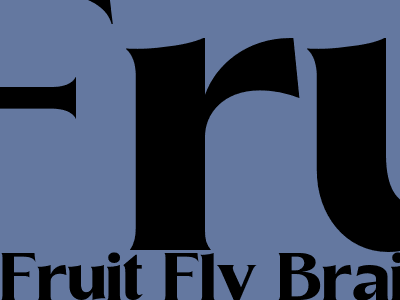Harnessing the Power of Knowledge: A Comprehensive Guide to Fruit Fly Brain
Prepare to embark on a fascinating journey into the intricate world of the fruit fly brain. With its unassuming appearance, this tiny creature holds within it a remarkable organ that has captivated the attention of scientists and researchers alike. In this blog post, we will delve into the depths of the fruit fly brain, exploring its structure, function, and the incredible insights it offers into the workings of human brains.
Unveiling the Anatomy of the Fruit Fly Brain
The fruit fly brain is a marvel of miniaturization, packed within the confines of a head barely larger than a grain of salt. Yet, this compact organ boasts a remarkable degree of functional complexity, rivalling the brains of much larger species. Anatomically, the fruit fly brain is divided into several distinct regions, each responsible for specific functions.
- The Mushroom Bodies: Centers of Learning and Memory
Two mushroom-shaped structures reside at the heart of the fruit fly brain, the mushroom bodies. These intricate structures play a fundamental role in learning and memory formation. By processing sensory inputs and coordinating motor responses, they endow the fly with remarkable cognitive abilities.
- The Central Complex: Navigating the World
At the center of the fruit fly brain lies the central complex, a neural hub responsible for processing visual and sensory information. It plays a crucial role in spatial orientation and navigation, enabling the fly to perceive its surroundings and navigate its environment.
- The Optic Lobes: Processing Visual Images
The optic lobes, as their name suggests, are responsible for processing visual images. They receive input from the fly's compound eyes and convert it into a neural representation of the surrounding world, allowing the fly to respond to environmental stimuli.
Decoding the Function of the Fruit Fly Brain
Beyond its anatomical structure, the fruit fly brain exhibits a wide range of functional capabilities. Its ability to process sensory information, learn from experiences, and make decisions is a testament to its remarkable adaptability and cognitive prowess.
- Pattern Recognition and Olfactory Learning
Fruit flies possess an impressive ability to recognize patterns and learn from their experiences. The mushroom bodies are central to this process, enabling the fly to associate odors with positive or negative outcomes, demonstrating the fly's capacity for olfactory learning.
- Circadian Rhythms and Sleep
The fruit fly brain also regulates the fly's circadian rhythms, the daily cycle of sleep and wakefulness. A cluster of neurons known as the clock genes controls these rhythms, ensuring that the fly's behavior is synchronized with its environment.
- Social Interactions and Courtship Behavior
Social interactions and courtship behavior are also influenced by the fruit fly brain. Pheromones, chemical signals released by flies, are processed by the brain, triggering specific behaviors that promote mating and enhance reproductive success.
Harnessing the Power of the Fruit Fly Brain
In addition to its intrinsic value as a model organism, the fruit fly brain has played a pivotal role in advancing our understanding of human brain function. Its genetic simplicity and amenability to scientific manipulation make it an ideal subject for studying fundamental principles of neurobiology.
Fruit fly research has provided critical insights into the genetic basis of neurological disorders, the mechanisms underlying neurodegenerative diseases like Parkinson's and Alzheimer's, and even the potential for neural regeneration. By studying the fruit fly brain, scientists are gaining valuable knowledge that has far-reaching implications for human health and well-being.
Conclusion
The fruit fly brain, while small in size, holds within it a vast reservoir of knowledge and insights into the complexities of the nervous system. Its intricate structure, profound functionality, and amenability to scientific inquiry make it an indispensable model for studying the fundamental principles of neurobiology and unraveling the mysteries of the human brain.

Komentar